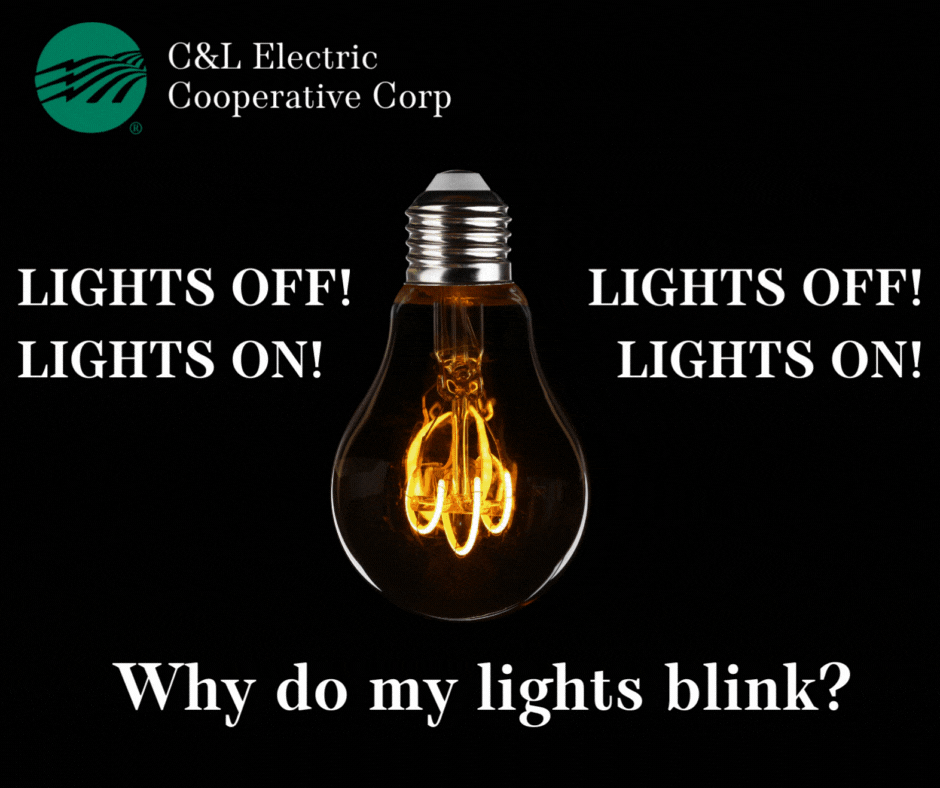

Why do my lights blink?
What are blinks? Blinks are momentary outages that occur when some type of disturbance exists on the line.
These “momentary outages” feel like a weakness in electric service reliability, but they’re actually a strength. C&L Electric’s electric equipment is designed to allow momentary outages to help prevent longer, sustained interruptions to your electricity.
When a blink occurs on the line from a lightning strike, an automobile striking a pole, tree limb or a squirrel coming into contact with a power line a breaker type device opens to stop the flow of electricity then quickly closes back. This device works like a breaker in the breaker box in our home, except it can reset itself automatically.
Have you noticed that blinks often come in sets of three before an outage? If the disruption continues, the breaker type device will operate or “trip” two more times giving the fault a chance to clear itself. If it does, it saves the cooperative from taking an outage and having to roll a truck. If it does not, the breaker type device stays open and stops the flow of electricity, protecting the lines from damage until the problem can be fixed. Let’s say this issue was a tree limb. During this time the limb loses contact with the lines. Usually a few seconds later, the same breaker type device automatically checks if the fault is still present and restores power, if possible. No limb contact, no fault, no prolonged power outage.
C&L Electric utilizes methods to reduce blink frequency by maintaining our power line right-of-way and deploying lightning arrestors and animal guards on the power poles.
Although the process is quick, blinks may cause circuitry in small appliances to lose their electronic memory making it necessary to reset digit clocks and appliances with digital displays. Cooperative members can lessen the effect and inconvenience of “blinks” when they occur.
Remember, when your lights blink, it is an indication that the cooperative’s equipment is operating properly, protecting electrical equipment and ensuring that as few members as possible experience any resulting outage.
What’s a power surge?
A power surge is different than a blink.
Power surges are brief overvoltage spikes or disturbances of a power waveform that can damage, degrade, or destroy electronic equipment within your home or business. Most electronics are designed to handle small variations in voltage; however, power surges can reach amplitudes of tens of thousands of volts — this can be extremely damaging to your electronic equipment.
Surges can be caused by internal sources, like HVAC systems with variable frequency drives, or external sources like lightning or damage to lines or transformers.
C&L Electric encourages all members to invest in surge protective devices (such as surge protector power strips) to safeguard your sensitive electronics. If you’re experiencing frequent surges in your home or business and you believe the cause is internal, contact a qualified electrician to inspect your electrical system.